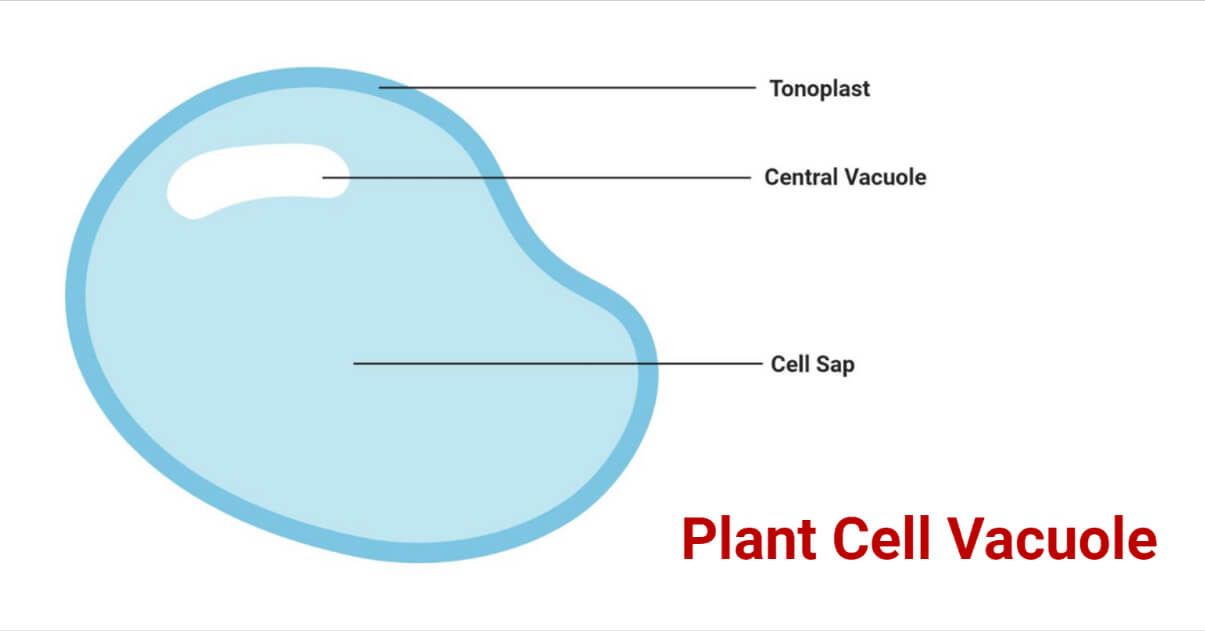3
Question
What are the functions of vacuoles in plants?
What are the functions of vacuoles in plants?
Open in App
Solution
Vacuoles
- The word "vacuole" literally means "space".
- They support the disposal and storage of several items.
- Vacuoles are bordered by a thin membrane filled with fluid and any molecules they take.
- Because both are membrane-bound sacs, they resemble another organelle called vesicles, however, vacuoles are substantially bigger than vesicles and are created when numerous vesicles fuse.
- The tonoplast, also known as the vacuolar membrane, is the cytoplasmic membrane that surrounds a vacuole and divides its contents from the cytoplasm of the cell.
- As a membrane, it primarily controls ion movements within the cell and isolates substances that might be dangerous or a threat to the cell.
- The fluid known as cell sap is found in the vacuoles, or tiny cavities, of living cells.
- It contains varying amounts of nutrients, waste products, inorganic salts, and nitrogenous chemicals.
Functions of vacuoles are given below:
Storage:
- During plant seed development and maturation, stored proteins are deposited into protein storage vacuoles (PSVs) and stably accumulate to large levels.
- Subsequently, during germination, the storage proteins are quickly broken down to release nutrients for the embryo to consume.
Ingestion:
- Through endocytosis, food particles are absorbed into the cell and placed in a vacuole.
- Lysosomes cling to the vacuole and release digestive enzymes to extract nutrients.
- The vacuole transports the remaining digestive waste products to the plasma membrane where they are exocytosed out of the body.
Digestion:
- When the food vacuole and a second vacuole, known as a lysosome, which contains potent digestive enzymes, combine, digestion takes place.
- Food is broken down, its nutrients are absorbed by the cell, and its waste products are left in the digestive vacuole, where they may eventually exocytose out of the cell.
Excretion:
- Contractile vacuoles prevent a cell from absorbing too much water and perhaps exploding by excreting surplus water.
- Wastes, including ammonia, that are soluble in water are expelled from the cell by the contractile vacuoles together with extra water.
Expulsion of excess water:
- The contractile vacuole is an organ that regulates water balance.
- It eliminates extra water that was obtained by osmosis from freshwater protozoa.
- The protozoan's vacuole enlarges when water enters it before eventually collapsing and expelling its contents through a surface pore.


Vacuoles
- The word "vacuole" literally means "space".
- They support the disposal and storage of several items.
- Vacuoles are bordered by a thin membrane filled with fluid and any molecules they take.
- Because both are membrane-bound sacs, they resemble another organelle called vesicles, however, vacuoles are substantially bigger than vesicles and are created when numerous vesicles fuse.
- The tonoplast, also known as the vacuolar membrane, is the cytoplasmic membrane that surrounds a vacuole and divides its contents from the cytoplasm of the cell.
- As a membrane, it primarily controls ion movements within the cell and isolates substances that might be dangerous or a threat to the cell.
- The fluid known as cell sap is found in the vacuoles, or tiny cavities, of living cells.
- It contains varying amounts of nutrients, waste products, inorganic salts, and nitrogenous chemicals.
Functions of vacuoles are given below:
Storage:
- During plant seed development and maturation, stored proteins are deposited into protein storage vacuoles (PSVs) and stably accumulate to large levels.
- Subsequently, during germination, the storage proteins are quickly broken down to release nutrients for the embryo to consume.
Ingestion:
- Through endocytosis, food particles are absorbed into the cell and placed in a vacuole.
- Lysosomes cling to the vacuole and release digestive enzymes to extract nutrients.
- The vacuole transports the remaining digestive waste products to the plasma membrane where they are exocytosed out of the body.
Digestion:
- When the food vacuole and a second vacuole, known as a lysosome, which contains potent digestive enzymes, combine, digestion takes place.
- Food is broken down, its nutrients are absorbed by the cell, and its waste products are left in the digestive vacuole, where they may eventually exocytose out of the cell.
Excretion:
- Contractile vacuoles prevent a cell from absorbing too much water and perhaps exploding by excreting surplus water.
- Wastes, including ammonia, that are soluble in water are expelled from the cell by the contractile vacuoles together with extra water.
Expulsion of excess water:
- The contractile vacuole is an organ that regulates water balance.
- It eliminates extra water that was obtained by osmosis from freshwater protozoa.
- The protozoan's vacuole enlarges when water enters it before eventually collapsing and expelling its contents through a surface pore.


Suggest Corrections
2
View More
Join BYJU'S Learning Program
Join BYJU'S Learning Program
